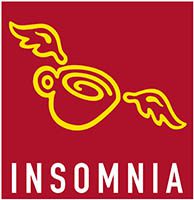Under the Social Security and Housing Benefits Act of 1982, employers have been responsible for providing Statutory Sick Pay (SSP) to employees for the first 28 weeks of absence due to illness.
A top priority for the government this year was taking comprehensive action in amending the SSP in response to COVID-19.
The UK government’s budget outlined a £12 billion plan to provide support for individuals, public services and businesses. The budget aimed to tackle the impacts of the coronavirus.
SSP legislation has seen an extension. Individuals who contract the virus and those advised by the NHS to self-isolate are supported by the country’s welfare system.
The government is also supporting businesses who have been subjected to increased costs or disruptions to their cash flow. They have expanded relief rates as well as a COVID-19 Business Interruption Loans.

When to start Paying SSP
- You should start paying SSP when the employee is sick for four days in a row; this includes non-working days.
- A sick day is not counted if an employee has worked for a minute or more, “before they go home sick.”
If the employee is sick or self-isolating because of the coronavirus.
- From the 13th of March 2020, you can start paying SSP for the first qualifying day that an employee is off for four consecutive days (this also includes non-working days).
- For instance, let’s say your employee self isolates before the 13th of March because someone they live with displays coronavirus symptoms, businesses are eligible to pay that member of staff from the fourth qualifying day.
- If the NHS or public health authorities contacts an employee in your business to notify them that they have been in contact with someone with coronavirus, start paying them SSP from the 28th of May.
- If an employee self-isolated before July 6th because a member of their support bubble not within their own household has symptoms or tested positive for the virus, start paying them for the 6th of July.
Suppose an employee finds themselves self-isolating because they have been advised to do so by a doctor or healthcare professional before going to a hospital for surgery: In that case, you can start paying SSP from the 26th of August.
If an employee is shielding because of COVID-19
- From the 16th of April 2020, start paying SSP to your employee who is shielding because of COVID-19 from the first qualifying day they are off work. Let’s say an employee has more than one shielding period, you should pay SSP to the employee for each period.
- If an employee has shielded before the 16th of April, they are not eligible for SSP, and you do not have to pay SSP to this employee.
Your employee is off sick for another reason
Standard SSP rules apply to employees: Start paying SSP from the fourth qualifying day. Usually, you have to pay for the first three (waiting days) unless the employee has been off sick and getting SSP within the last eight weeks.
When do I stop paying SSP?
You can stop paying it when your employee no longer qualifies for it.
Qualifications:
- The employee must have an employment contract.
- Have worked under their contact.
- Have been sick for four days in a row (or more) including non-working days. This is known as a period of incapacity for work.
- They must earn an average of at least £120 per week.
- They must give you the right notice.
- Give your proof of their sickness, only after seven days off.
For employees still qualify for SSP even if they are paid less than eight weeks pay.
For more information on Qualifications click here.
Keeping Records
As an employer, you will need to keep records of the SSP you’ve paid to an employee. It is important you do so in the case you want to be reimbursed for it. Keep the following records for three years after the end of this tax year as evidence you paid SSP to a member of staff.
Records needed:
- The dates your employee was off sick.
- Which of those dates were qualifying days
- The reason they said they were off work
- The reason they were off work.
- The employee’s National Insurance Number.









